How Nespresso Maintain
Market Dominance
- admin
- July 22, 2024
- 6:37 am
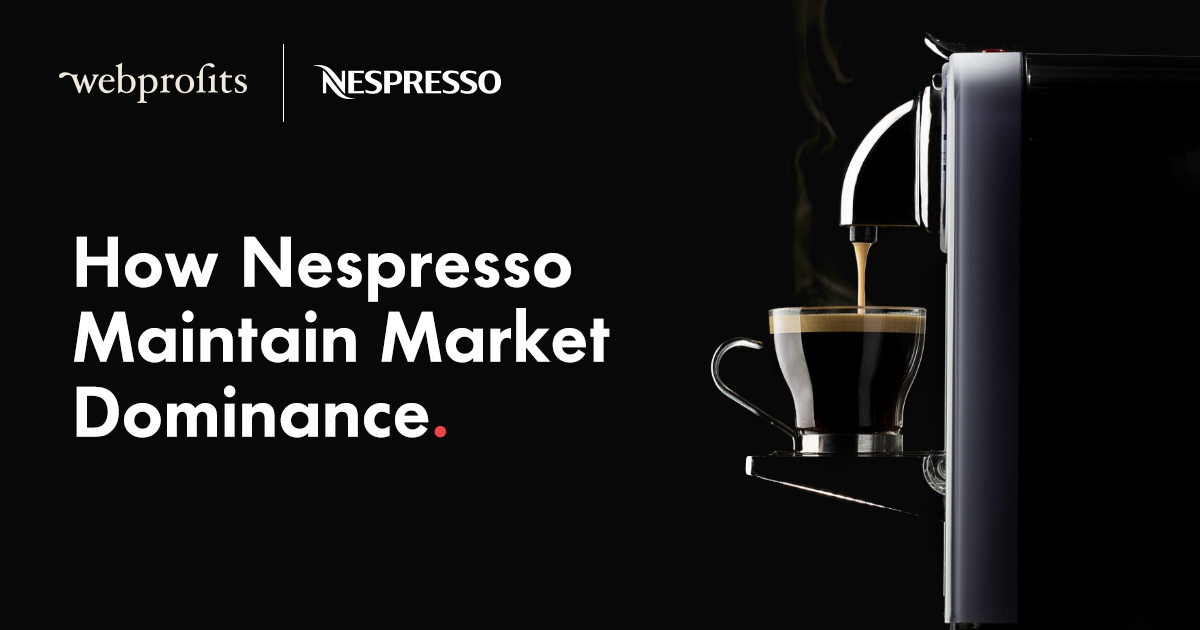
Nespresso changed the coffee industry with their technology in the 80’s.
Their new coffee machine with sealed coffee pods allowed customers to make Italian style coffee, at home, at a fraction of the cost.
35 years later the company is still thriving, turning over more than USD$6.3 billion in 2020, 7% higher than in 2019.
It wasn’t an overnight success – the business initially had a B2B focus selling into offices in Switzerland and Japan. But as they improved the technology, they also started to understand the customer better.
This happened to coincide with the growth of coffee drinking culture and the rise of Starbucks in Europe in the 90s. Suddenly, people were looking for ways to have barista-style coffee at home, and Nespresso were able to provide it at a relatively low cost.
They were able to build up a big lead on their competitors by patenting the technology that led to their success, but those patents started expiring in 2012.
Since then, a number of alternatives (to both the machinery and the pods) have launched and grown, but Nespresso also has to contend with instant coffee, filter coffee, french-press, stove-top, as well as barista style coffee at home and takeaway from cafes.
With so many ways to enjoy a cup of coffee, this article will explore how Nestle use digital marketing to maintain their 30 year position as a market leader.
They focus on generating recurring revenue
Nespresso machines were considered groundbreaking technology when they were first invented. Even today, the concept of how it works is pretty interesting.
In my opinion, though, from a business point of view, it was their revenue model that enabled them to grow quickly.
Buying a Nespresso machine earns you entry into the Nespresso Club. Among many benefits (which we’ll talk about later) the Club was how you ordered your coffee pods.
At this point Nespresso didn’t have any retail stores and, as it was 1989, they didn’t have a website either. Buying pods was done through mail order or over the phone, and Nespresso used the forms to create a database of their customer’s preferences and ordering habits.
They were building a CRM in the 1980s because even then they knew that their success was based on ongoing customer sales and not the initial order.
They make it easy for customers to repeat purchase
A critical step to acquiring and then establishing recurring revenue from their customers was to make it as easy as possible for them to buy time and time again.
They make it easy for customers to repeat purchase
One of the ways they ensure their customers never run out of supply is by having a subscription service.
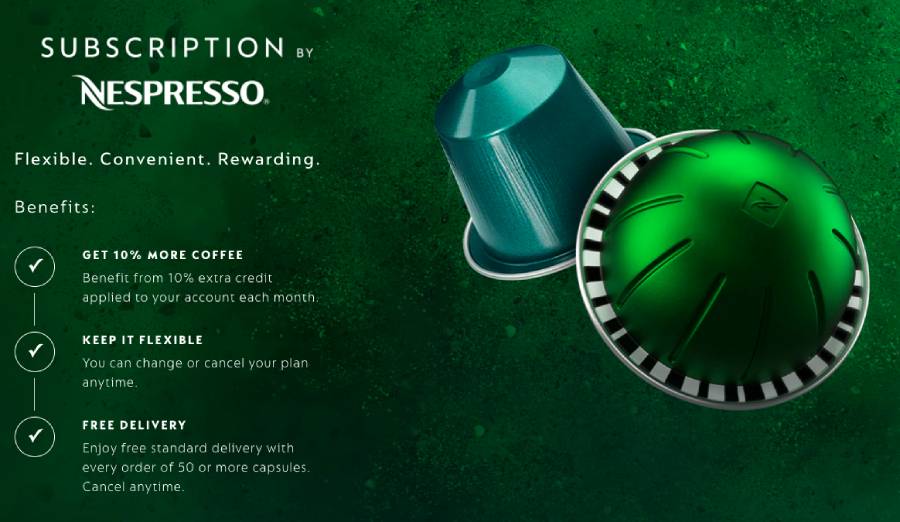
Not only is having a subscription convenient, but it also comes with added benefits such as discounts, free delivery, and a lot of flexibility.
This format of subscription gives the customer credits, which they redeem each month by logging in and deciding which flavours they want to order.
They make it easy to re-order
Don’t want to commit to a subscription? Not a problem, they make it easy to re-order whatever you ordered last time.
And I mean really easy.
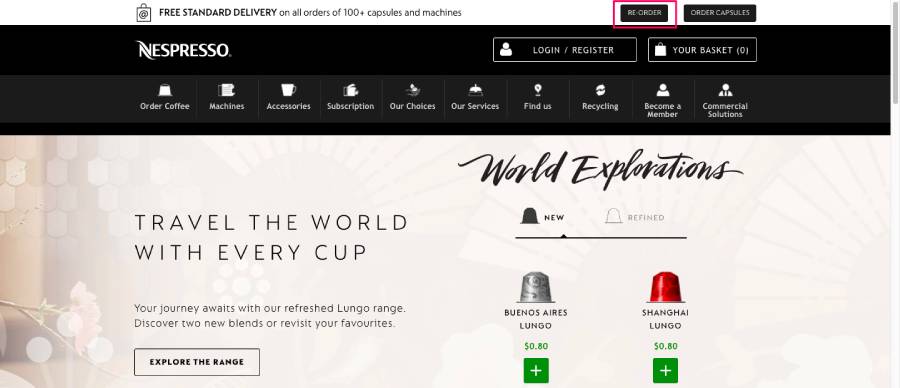
This is a screenshot on their homepage. Notice the button to re-order right at the top of the page?
The customer hasn’t even signed in yet and they can click to re-order. Clicking this button takes you through to a page that lists your orders so you can easily select one for re-order.
They let customers set up recurring orders
Similar to the subscription (but without the benefit of discounted pods), Nespresso allow customers to set up recurring orders through a service called Easy Order.
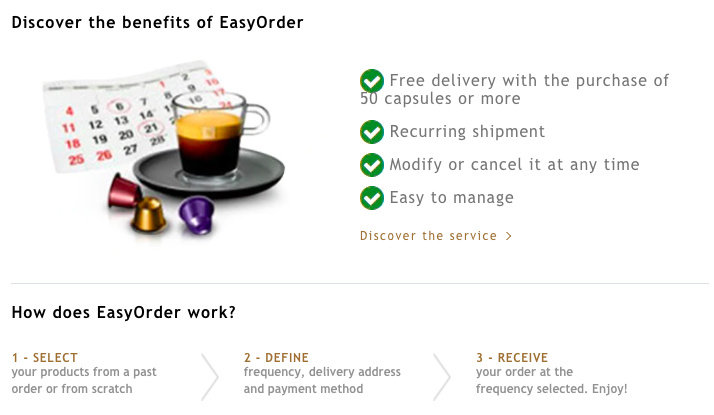
This method is even easier for customers who know exactly what they want.
Their machines are a loss leader
Selling pods to customers for years is how Nespresso make money, but those customers need a machine in order to use the pods.
Today there are hundreds of makes and models for pod-based coffee machines, and as a brand that positions itself as a luxury item, you would expect Nespresso to be more expensive than their competitors.
That might be true for the high-end machines, but Nespresso’s strategy, particularly in the early days, was to sell the entry level machines at lower prices and make money off the back of selling pods in the long term.
It’s a classic Razor-Razorblade strategy that worked so well for Gillette.
Now, Nespresso have taken the approach to the next level by selling their machines for $1.
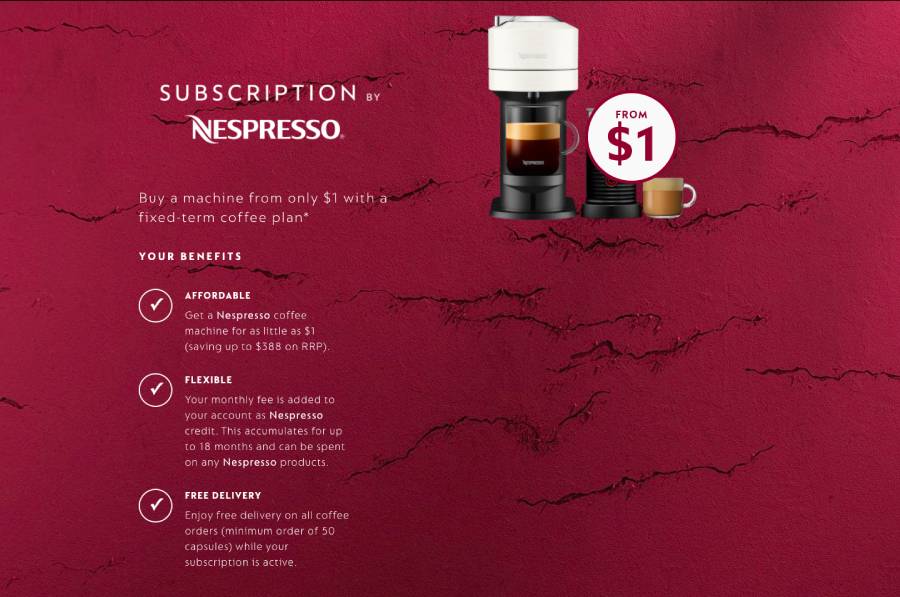
Though the machine only costs $1, the customer has to sign up for a 12 month subscription where the monthly fee is used to purchase coffee pods.
They keep innovating with new products
One thing that’s important to note is that you can only focus on long term revenue if your product or service delivers true value to your customers.
Nespresso may not taste quite like your fresh barista made coffee topped with Louvre-worthy foam art. However, Nespresso keep innovating with new flavours and origin roasts to keep customers interested. Something your local barista can’t or won’t do.

These new flavours are usually limited edition and run in seasonal batches. The point isn’t to get the customer hooked onto a new flavour, it’s to give them something new to try when they go to purchase their usual order.
This helps to keep the experience different and interesting, which ensures the customer continues to buy from them for a longer period of time.
My regulars are Nicaragua and Kazaar. But at this writing I’m currently also enjoying Buenos Aires and am a bit intrigued by Stockholm.
Key Takeaway: In a world where businesses are often chasing short term gains, Nespresso buck the trend by recognising the lifetime value of a customer over their initial order. Not only do they make it technically easy for customers to buy from them, they ensure the experience remains interesting by releasing new flavours so that customers keep wanting to come back.
They differentiate based on quality
As we touched on earlier, there are many alternative ways to drink coffee.
As well as all the other pod providers, Nespresso’s audience have other techniques they could use, such as instant or filter coffee.
Nespresso distance themselves from both by positioning themselves as a luxury, high-end, brand. And they’ve done this from the get go.
Here’s a quote from their former CEO, Jean-Paul Gaillard.
“I wanted to create the Chanel of coffee, and decided to keep it chic and bobo. The idea was to keep it to the level of people who have a doorman”.
So, how do they do it?
They know their audience
First and foremost, Nespresso take the time to understand their audience.
You can see from the quote above that they had specific customers in mind, but there’s evidence to suggest they continue to invest in understanding what their customers are like and what they want.
In this case study we can see that Nespresso used social listening tools to find insights on how and why people make and drink coffee.
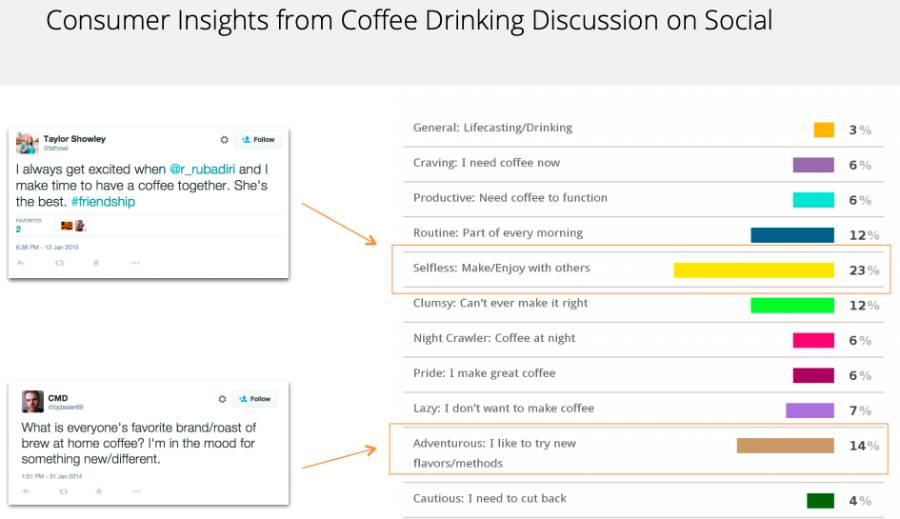
The case study goes on to outline the details and performance of a specific campaign, but it’s clear that Nespresso use these insights across the rest of their marketing.
They speak to a specific segment of the market
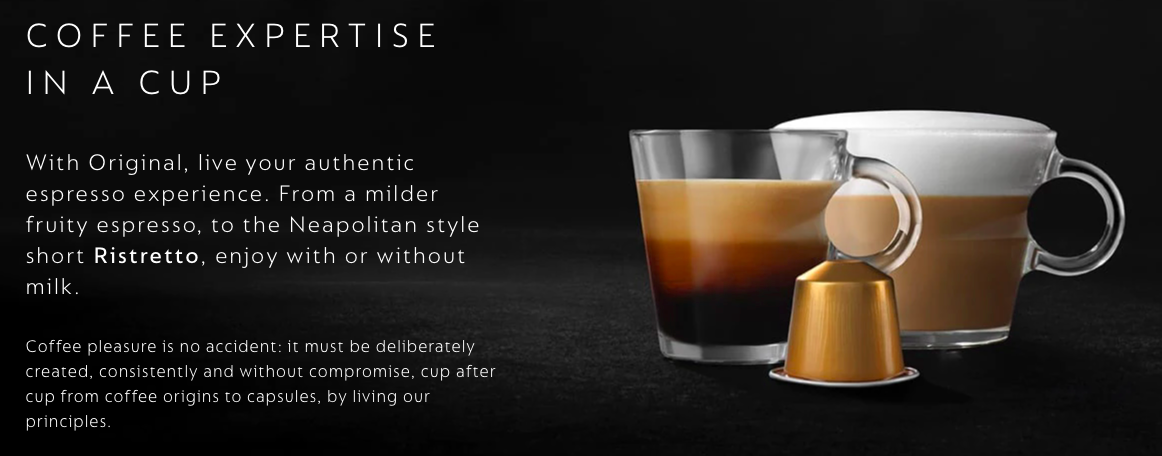
Here’s a screenshot and quote from their website.
“Coffee pleasure is no accident: it must be deliberately created, consistently and without compromise, cup after cup from coffee origins to capsules, by living our principles.”
They’re not speaking to standard coffee drinkers, they’re communicating with coffee aficionados (dare I say coffee snobs?). Or at least coffee regulars who drink coffee enough to taste the difference between a flat white and latte.
You can also see it in their Google Ad copy.
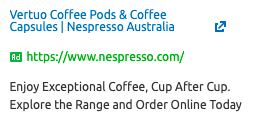
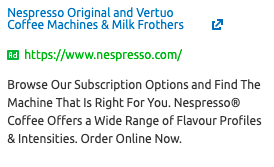
They’re not speaking to standard coffee drinkers, they’re communicating with coffee aficionados (dare I say coffee snobs?). Or at least coffee regulars who drink coffee enough to taste the difference between a flat white and latte.
You can also see it in their Google Ad copy.
The products look luxurious
Whether it’s on their site, social media, television, or anywhere else, the coffee is always displayed in a clear glass with crema or foam on top.
Here it is on their website.
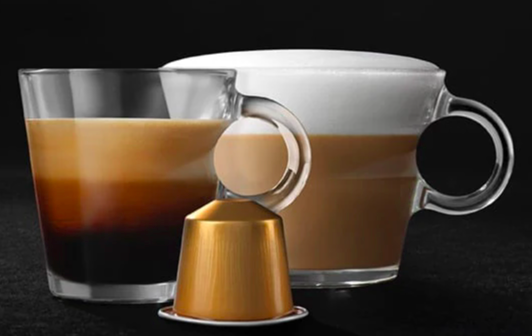
Even in the navigation bar.
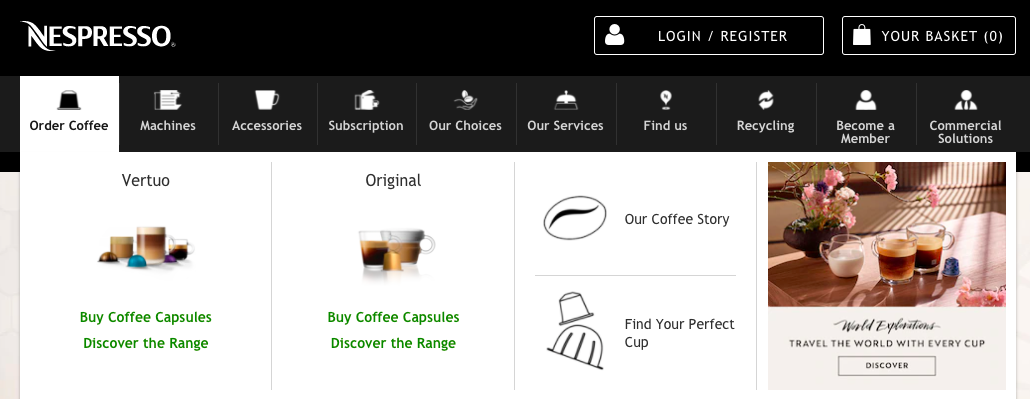
And in their social media ads.

